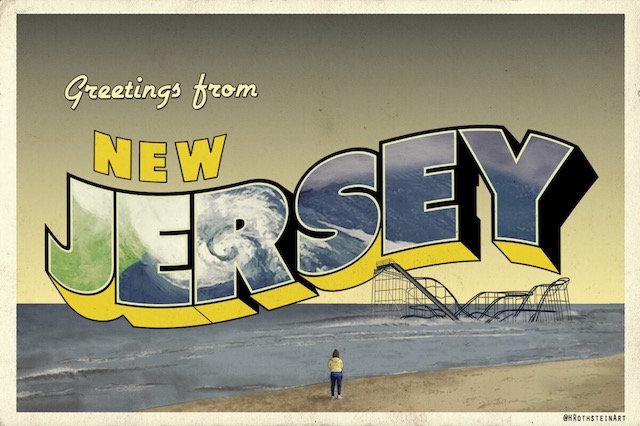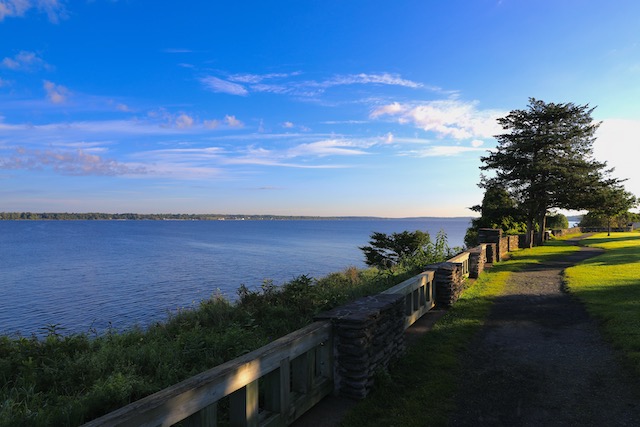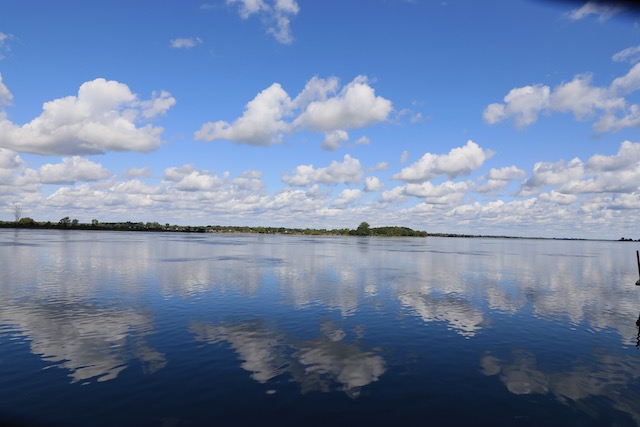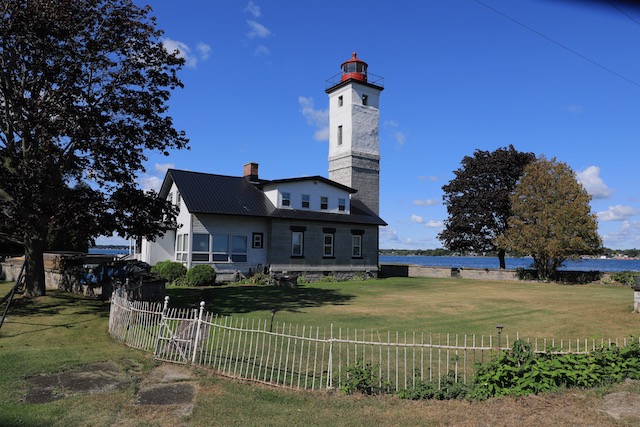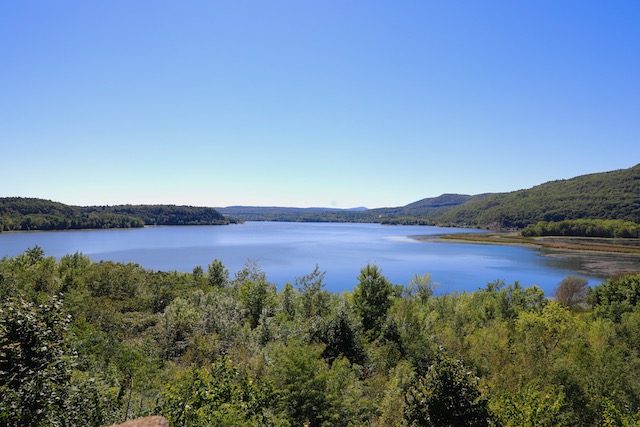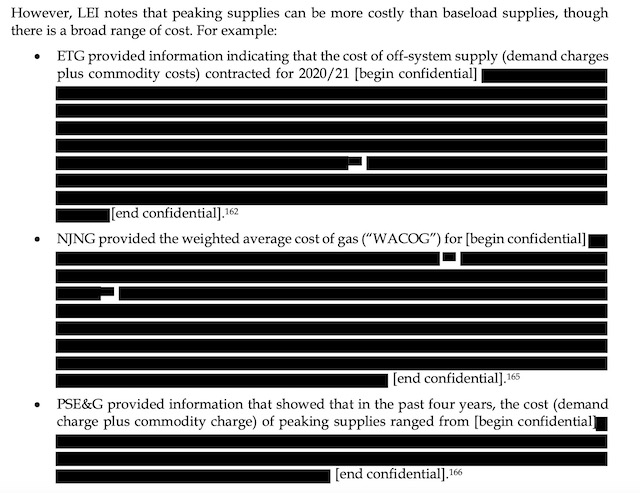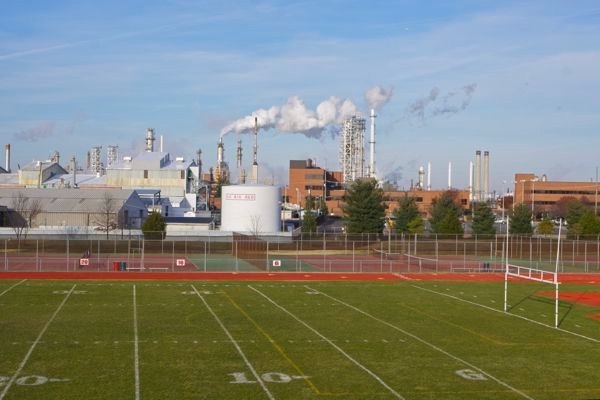NJ Senate Environment Committee Chairman Invokes Constitutional “Takings” To Reject Climate Based Land Use Regulation
“Takings” Comment To The Right Of Libertarians & Corporate Property Rights Zealots
Reliance On Failed Local Land Use Powers Is A Gross Abdication of State Responsibility
Remark is “highly irresponsible – bordering on criminal negligence”
[Update below]
I just choked on my coffee reading this written remark by NJ Senate Environment Committee Chairman Bob Smith.
Smith was responding – in writing, giving him time to reflect – to a public question posed at a NJ Spotlight roundtable on stormwater management.
I’ve worked confidentially and closely with Smith on legislation and publicly monitored and testified before his committee for many years, and long been concerned about his thinking and lack of action on land use. Let me offer just 3 of many examples I could cite: 1) He only sponsored the Highlands Act because he was directed to do so by Gov. McGreevey. 2) Smith flat out insisted that the Ocean and Coastal Protection Council bill (also enacted into law) did not provide new land use powers to DEP. 3) Most recently, Smith backed a lame climate land use bill that perpetuated the demonstrably failed reliance on another fabricated and false notion of exclusive “home rule” on land use.
(And off course, there is a pattern: Smith did nothing before Superstorm Sandy, did nothing after Superstorm Sandy and is doing nothing after Ida either). The Dirge goes on:
So, based on those experiences and many others, I think Smith’s remark was not off the cuff hyperbole, but actually represents his ideological views on land use.
Here is the question and Smith’s reply, followed by my letter to Smith taking strong exception to his remark: (NJ Spotlight)
Q: In a time of increased flooding risk due to the climate crisis, do private companies have a responsibility to the state to reduce impervious surface and/or prevent impervious surface from being built, i.e., by building/developing less land and/or not selling property to developers who will reduce pervious surface? Or is this yet one more thing that must be legislated at the local level via ordinance?
See the 5th Amendment of the U.S. Constitution, but should be regulated by local zoning. — Sen. Robert Smith (D-Middlesex), chair of Senate Environment and Energy Committee
Here is my reply to Smith, with a copy to DEP Commissioner LaTourette:
Dear Senator Smith – I just read your response (excerpted below) to a question published by NJ Spotlight. I was simply, astonished.
Could you please clarify and expand upon your glib remark, or guide me to some legal basis for your “thinking” here?
As you know, there are many NJ State laws and DEP implementing regulations – including laws you sponsored like the Highlands Act – that regulate land use, including restricting the location and extent of impervious surfaces and limiting the volume, rate, and risks and impacts of the stormwater it generates. These laws apply to existing and proposed new development.
The DEP has even used impervious surface regulations as a basis to promote development under the CAFRA regulations.
These State laws and regulations have all been upheld by the NJ Supreme Court and federal courts with respect to “takings” challenges.
We are in a climate emergency. The private sector must be responsible for the many adverse impacts they create, including from stormwater. Private property is not immune from law and regulation.
It is more than obvious by now that the current State legal and regulatory framework are grossly inadequate and failing to respond to the climate emergency.
The NJ Legislature and the DEP must greatly expand the scope and stringency of virtually all laws and regulations with respect to greenhouse emissions reductions and adaptation to climate impacts.
As a leading legislator, it is highly irresponsible – bordering on criminal negligence – to throw up your hands and hide behind a manufactured and false facade of the US or NJ Constitution’s “talkings” provisions and to continue to rely on a false notion of “home rule”.
I look forward to your clarification.
Bill Wolfe
C: DEP Commissioner LaTourette
* letter was amended on home rule
[End Note: Senator Smith did nothing with his legislative oversight and regulatory veto powers when the Murphy DEP weakened stormwater regulations – a move that was strongly criticized by FEMA – and even his bill’s supporters were forced to admit that the local “home rule” based stormwater utility law is a total failure – not one community is implementing it, not one.: (NJ Spotlight)
Q: What New Jersey municipalities have successfully created stormwater municipal authorities? How long have they operated and are fees adequate to address the “itsy-bitsy creek?”
NJDEP is not aware of any New Jersey municipality that has created a stormwater utility. To assist willing local governments, NJDEP has published Stormwater Utility Guidance, which is available here. — Shawn M. LaTourette, Commissioner, New Jersey Department of Environmental Protection (NJDEP)
[Update: Here is the current NJ case law on “regulatory takings” that would apply to State land use regulation: (case citations omitted. Hit the link and read the entire Court’s decision if you are interested).
Note the “categorical example” that establishes the legal standard to trigger a taking: to deny “all economically beneficial or productive use of a property” – a very high standard. Constitutional and statutory police power based State regulatory limitations – even severe limits – on impervious surfaces, reductions of off site stormwater generation and flooding, and the location and extent of development to protect public health and safety does not come close to triggering this “takings” standard – thus exposing the legal absurdity of Senator Smith’s radical views.
The State’s land use regulations only become legally stronger during a climate emergency – and are virtually bullet proof in the event of an emergency declared by the Governor and/or the Legislature.
Importantly, federal and NJ Courts have recognized that the Gov. even has the power to declare a climate emergency and impose a complete moratorium on development and need not wait for the Legislature to act:
As for regulatory takings, one categorical example occurs when governmental regulation denies all economically beneficial or productive use of a property. […]However, not all temporary regulatory deprivations of economic use of property will constitute a compensable taking.
To determine whether a regulatory taking has occurred, we must consider the economic impact of the regulation on plaintiff, the extent to which the regulation has interfered with plaintiff’s investment-backed expectations, and the character of the governmental action. […]
In the present case, the facts do not support the existence of a compensable regulatory taking, temporary or otherwise. In terms of the economic impact of the EOs, and their interference with plaintiff’s investment-backed expectations, it is clear the EOs had a significant impact on the operations of gyms and fitness centers. However, plaintiff was never deprived of all economic beneficial or productive use of its property. […]
The State is not liable for a regulatory taking merely because the operations permitted resulted in lower revenue than plaintiff might have earned without the regulations in place. […]
Finally, and most important, the nature of the governmental action strongly weighs against finding a taking. The limitations placed on plaintiff’s business were not specific to plaintiff, or even to gyms and fitness centers as a group. The same or similar limitations were placed on numerous categories of businesses, and it is undisputed that these limitations constituted valid exercises of the State’s police powers in the context of a public health emergency, to mitigate the spread of COVID-19.
Under these circumstances, we cannot find a compensable taking, recognizing the State’s broad power to restrict the uses individuals may make of their property in order to protect the health, safety, and welfare of the public. ~~~ end update]
